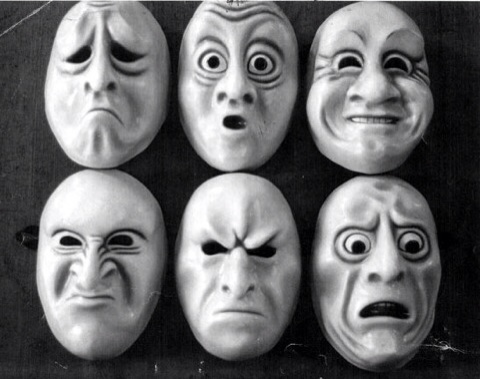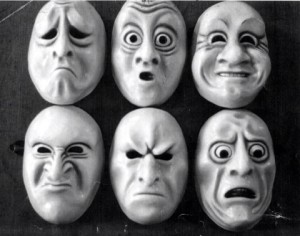Emotional Labeling
Often, when I ask my clients how the week has been or how they are feeling, I receive a range of responses such as “shitty”, or “it sucked”, “awful”, or conversely “great”, “wonderful”, “terrific” and so on. Those response are fine, but as a therapist, my job is to help people develop a vocabulary to more discriminatively express their feeling states. This ability to recognize and label feelings is a core component of emotional mindfulness. Sadly, as a culture, we are largely emotionally illiterate. By becoming awake to our transient feelings, and being able to consciously pay attention to them, we can learn to gradually exit the realm of reactive emotional responding, and learn to become more expressive of our immediate emotional feelings and needs. Paradoxically, when we are able to pointedly devote our attention to our emotions, they become more fluid and dynamic, and therefore we are less stuck in them. Like the tides, we can watch feelings rise and ebb of their own accord. But this requires mindful attention. Labeling feelings and increasing our emotional literacy, is the key to being able to direct our attention to them, which lies at the heart of mindfulness.
And so, the practice is simple, though often difficult to remember. One is asked to simply pay attention to their feelings and provide a definitive label. It must be an emotional term such as angry, sad, frustrated, lonely, bored, hopeless, helpless, ashamed, and so on. Words such as “hurt” have no discriminative meaning. After all you can feel hurt when you stub your toe. “”Shitty” similarly is not an emotion. It is a description of one’s evaluation of a feeling state. It indicates that they don’t like what they are experiencing.
If one needs help identifying and labeling feelings, there are good on line resources such as emotion adjective wordlists. Sometimes I provide these to my clients such they can order up emotional labels like items off a Chinese menu. It should be noted that often times, one might experience multiple or simoultaneous feelings. Some of these feelings might even seem conflictual or in opposition to each other. Other times, feelings may seem to switch rapidly between one and another. It’s all good. Whatever happens, happens.
OK, so the next question that invariably arises, is, “Now that I have identified and labelled feelings, what do I do with them”? A perfectly reasonable question. After all, we are Americans. We always have to be able to “do” something. We should be able to fix, mend, modify, replace, augment or do whatever it is to something that is aberrant, broken or painful. But in the realm of mindfulness, those solutions would only compound the problem. There is nothing to control, because at the deepest level, nothing is broken. I often ask people when this question arises, “Do you feel the need to do anything with joy or happiness when they arise?” Of course the answer is no. Nobody questions positive feeling states. So, the idea is simply to be present. Just watch. Continue to watch and label feelings as they arise. And as I have stated in many previous posts, see if you can identify the physical locations in your body from where the feelings seem to emanate or resonate with. This helps to anchor attention. Furthermore, you will quickly see how emotional energy quickly shifts from one physical bodily location to another as you open up to these energies.
So why does this help? Research has been overwhelmingly documenting how mindfulness based practices are assisting people witha range of difficulties such as anxiety, depression, substance abuse, personality disorders and even criminal behavior. Essentially, mindfulness https://blackturtlebooks.com/mindfulness-and-psychotherapy-the-mindful-brain/ us from a purely reactive emotional disposition, and allows us to engage life problems with greater emotional equanimity. Neurobiological research shows how the brain responds to threat and provocative emotional stimuli in a more wholistic and integrated neural pattern (see previous posts: https://blackturtlebooks.com/neurobiology-of-emotional-mindfulness/ , https://blackturtlebooks.com/mindfulness-and-psychotherapy-the-mindful-brain/. Subjectively, people are able to recognize that they are not wholly identified by their transitory emotional states. By learning to watch their thoughts and feelings without control, they become more awaketo their immediate experience and therefore less likely to be trapped by conditioned patterns andreactions. In short, they become more free.
You are invited to post comments, questions, personal experiences, or disagreements.






